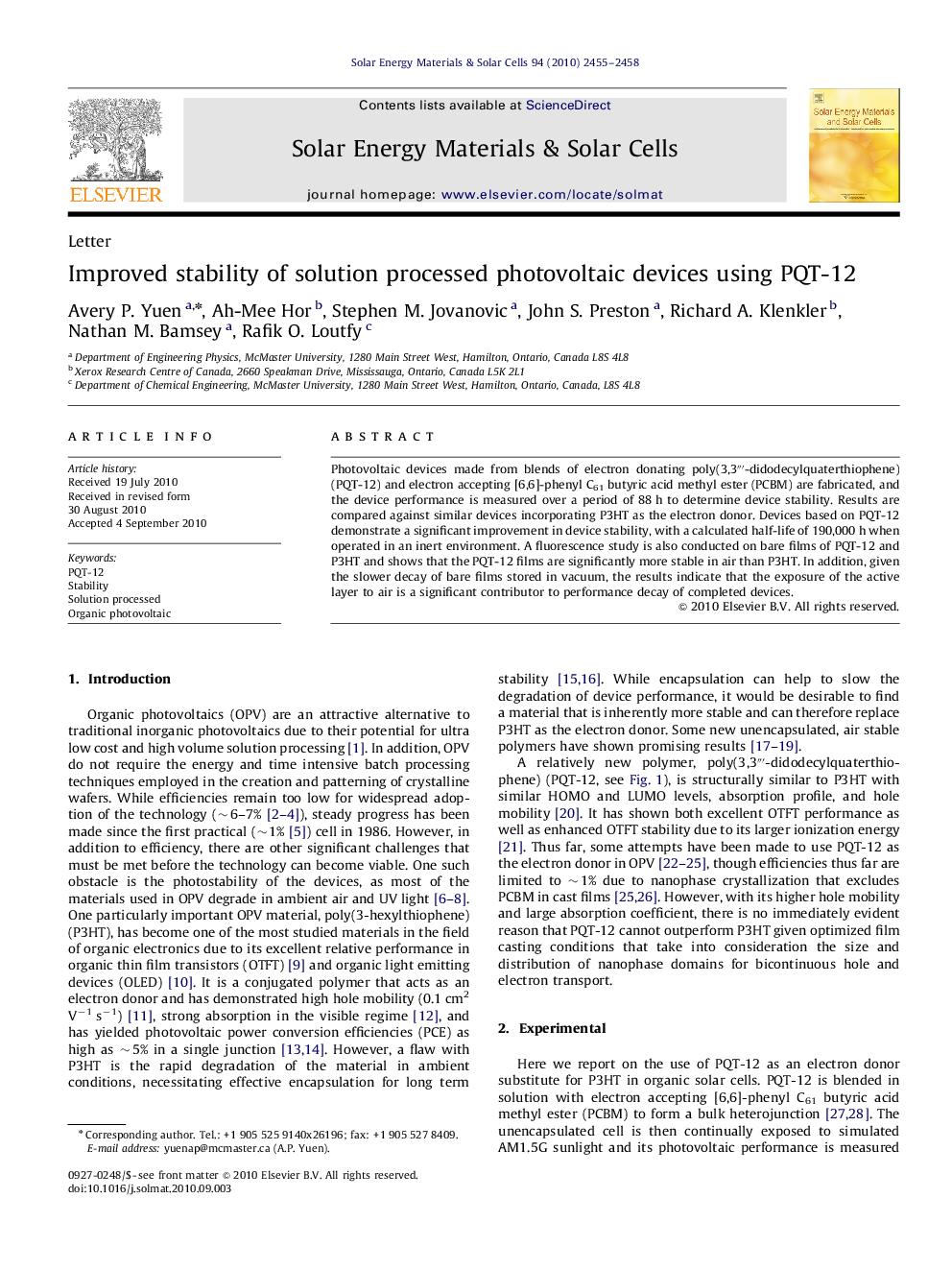| Article ID | Journal | Published Year | Pages | File Type |
|---|---|---|---|---|
| 79868 | Solar Energy Materials and Solar Cells | 2010 | 4 Pages |
Photovoltaic devices made from blends of electron donating poly(3,3‴-didodecylquaterthiophene) (PQT-12) and electron accepting [6,6]-phenyl C61 butyric acid methyl ester (PCBM) are fabricated, and the device performance is measured over a period of 88 h to determine device stability. Results are compared against similar devices incorporating P3HT as the electron donor. Devices based on PQT-12 demonstrate a significant improvement in device stability, with a calculated half-life of 190,000 h when operated in an inert environment. A fluorescence study is also conducted on bare films of PQT-12 and P3HT and shows that the PQT-12 films are significantly more stable in air than P3HT. In addition, given the slower decay of bare films stored in vacuum, the results indicate that the exposure of the active layer to air is a significant contributor to performance decay of completed devices.
